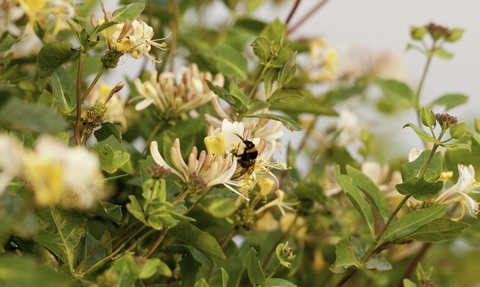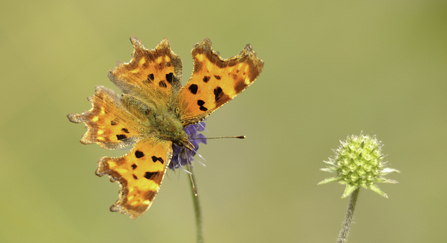
Honeysuckle {Lonicera periclymenum}, Denmark Farm Conservation Centre, Lampeter, Wales, UK. June 2011. - Ross Hoddinott/2020VISION
Wildlife Gardening Tips for June
Plant a nectar café
The garden will now be coming alive with bees, butterflies and other nectar-loving invertebrates, which you can help by creating a nectar café.
- Choose a sunny, sheltered spot in the garden and mark out a flower bed.
- Remove the turf and turn over the soil in preparation for planting.
- Plant out a variety of plants to try and ensure that nectar is provided from spring right through to autumn.
- Choose native varieties over cultivated plants, which are unlikely to produce as much nectar.
- Add climbers that also produce berries and hips for added bonus e.g. Honeysuckle, Dog Rose, Ivy and Black Bryony.
- Attract moths with night-scented plants like Evening Primrose and Night-Scented Stock.

© Amy Lewis
Create an abode for toads
An easy thing to do for wildlife this month is create a place where toads and frogs can shelter from the heat of the sun and from predators. In a grassy area, near the pond if you have one, dig a chamber 3-4cm deep with a sloping entrance. Cover
this with a paving stone to create a perfect hidey-hole. Alternatively, get an earthenware flowerpot and gently knock a small hole in the side. Place in a grassy area.
